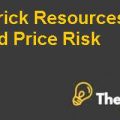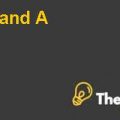
Background:
If one has an option to invest in the multiple investment options available to him, then a rational person would not go to invest all his money and save it in the same class of asset. The reason behind this is that a rational person, who is aware of all the risks and returns associated with the particular asset class, and in case there is a decline in that class of the asset’s value, the person would lose all his investment. So, it is better to invest in multiple investment opportunities available. Since, there are so many options available to the investor to lock his savings, but every category of investment can be easily categorized in three basic needs: income, safety, and growth in income to meet the future inflated expenses. These basic needs are generally the needs of an investor. The investors may have more than the above mentioned objectives, like our objectives are (including above) the need for the amount to meet our future educational expenses, visit to abroad countries, job searching expenses, etc.
Return Objectives:
From the investors’ point of view, the return must have an adequate amount so that he/she can meet his/her future expenses. The following may be the return objectives of the investor: capital preservation, capital appreciation, current income and total return.
Capital preservation means the need to maintain targeted capital. For this purpose, investor should invest in that class of asset whose return is at least equal to the inflation rate in the country. In other words, nominal rate and inflation rate should be on same level. For instance, if the prevailing rate of inflation in the country is 7%, then the return from the investment should be at least equal to 7% in order to maintain his/her capital invested. We will need an annual of $20,000 from the invested amount of $200,000. This represents the 10% return over the invested amount, i.e. equal to the rate of inflation. According to the investor needs to invest all his money of $200,000 and in order to have $14,000 (7% return), he needs to invest 81% in the Stocks, 11% in bonds and 8% in Cash.
Capital appreciation is what the investor is always looking for i.e. growth in his capital invested rather than only preserving it. For this objective, the investor should invest in that asset class who is generating returns that must be more than the inflation rate in the country. According to the case study, in order to have $22,000 (11%) over the invested amount of $200,000, the investor needs to invest 82% in Stocks, 11% in Bonds and 7% in Cash.
Current income is always the basic need for the investor to create a portfolio based on his capital. This is mostly seen in the case of the retired investors who no longer have any source of income to meet his/her expenses and spending needs. Total return means to raise capital invested with both appreciation and reinvestment of that appreciation.
Risk Tolerance:
The risk tolerance of every investor varies from one to another. Some investors have an aggressive approach towards the risk and they are known as risk takers, who do not hesitate to take high risks against higher return. Another type of investors are the one having moderate sense towards risks. Although they are concerned about the return they are going to earn but in the meantime, they are also concerned about their capital. We have another type of investors called risk averse, who do not want to take any systematic risk, thus, do not get any extra return.
Constraints:
Apart from all above advantages and benefits, maintaining a portfolio of investment has its own demerits. One of the major disadvantages of making portfolio is that it is always possible to lose money. If an investor has made an investment in the real estate or let’s say in a rare commodity, the value can rise or fall depending upon the popularity in the market. Apart from losing money there are no such disadvantages of making a portfolio. The followings are some factors which affect the risk tolerance of the investor......................
This is just a sample partial case solution. Please place the order on the website to order your own originally done case solution.













